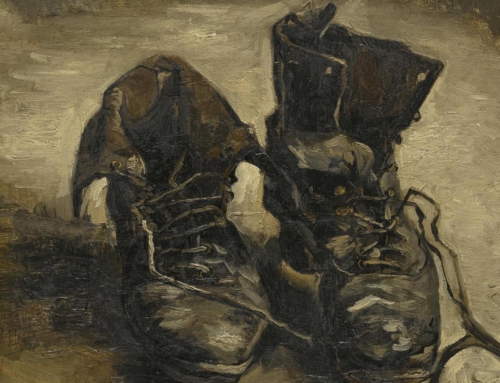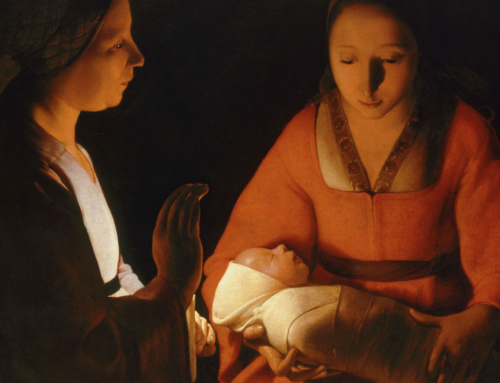It’s fascinating to watch people walk through an art museum, glancing here and there, and then stop suddenly in their tracks. They then stare silently at a particular piece of art for a long time. When you are caught up like this, you don’t simply notice that the piece depicts a mother holding a child, for instance, and then move on. Instead, it is as if you chew on it and digest the many various facets. The mother’s fixed gaze on the child enables you to feel the love she has for her child. The expression on the child’s face causes you to think about the safety the child feels in his mother’s arms. Art captivates us; it draws us in and elevates us to think of higher things. It invites us to engage in a meditative act.
This sort of activity, however, seems to be at odds with our fast-paced society, which constantly bombards us with stimuli. For instance, the “best” movies are the action-packed ones. As soon as the plot starts to slow down or when we think that we have gotten the gist of a scene, we want to move on to the next one. We sacrifice depth for the sake of getting the most stuff in the least amount of time.
It does not seem, however, that the satisfaction of looking at beautiful art could be replaced by the latest action movie. I believe this is because our desire for beautiful art is a glimpse of man’s desire for God. “The desire for God is written in the human heart, because man is created by and for God; and God never ceases to draw man to himself” (CCC 27). Hence, no matter what, there is a longing in each of our hearts that only God can fulfill.
Throughout Christianity, lectio divina, or sacred reading, has been a tremendous aid for the faithful to draw closer to God. It is well known that there are many programs out there that are designed to help you to read the entire Bible in one year. This should be applauded since it is important to be well versed in all of God’s Word and not just a particular book. However, we should strive for breadth and depth. Looking at beautiful art serves as a good analogy for an approach to lectio divina. You don’t simply read the passage, get the gist and move on to the next passage. Instead, you spend time with it, chewing on and digesting various facets: asking yourself about particular words that stand out, gaining further insight into Christ, and seeing the significance of the passage in your own life and the life of the Church today.
In addition to chewing, another helpful analogy regarding lectio divina is to approach the passage as if we were carrying a fragile vase. We do not want to be so cautious that we never move forward for fear of breaking the vase, but we do want to recognize the dignity and significance of the task we are undertaking. We are reflecting on the Word of God. How important it is to grow in gratitude for the gift given us!
St. Francis de Sales, whom we celebrate today, is remembered for writing An Introduction to the Devout Life for his cousin who was preparing for marriage. He emphasizes that each person can, through the grace of God, live a devout and holy life according to his or her vocation. St. Francis reminds us that, regardless of our state in life, we can all approach the Word of God and we can do so in the same way that we approach beautiful art: by savoring the precious details. The busyness of our lives does not inhibit our ability to meditate on the Word of God. Instead, it becomes the context through which God speaks to us. St. Francis writes to his cousin, “listen with attention and reverence; seek to profit by it, and do not let the precious words fall unheeded; receive them into your heart as a costly balsam; imitate the Blessed Virgin who ‘kept all the sayings’ concerning her Son ‘in her heart’.”
✠






